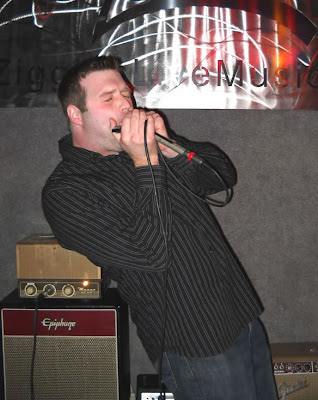
Well… “Hate” is kind of a strong word. Let’s just say I prefer the tone of other amps.
The EL84 is a power tube used in some amps popular for harp. I am unaware of any custom maker of harp specific amps who uses EL84 tubes in any of his products. However, there are lots of EL84 guitar amps that are adapted for use with blues harp. These include the Fender Blues Junior, Fender Pro Junior, Peavey Custom 20 (and Custom 30), Epiphone Valve Jr, and the vintage Kalamazoo amps, among others.
Here’s the problem: Some harp players like the EL84 tubes because they are easily driven to distortion with the high output of bullet mic meant for blues harp. The output of a bullet mic is MUCH higher than a typical electric guitar pickup. The distortion that results is annoying. I describe it as a crackly mush in the upper mids. I hear it to some degree in all EL84 amps.
Here’s what causes the problem: The EL84 tube is subject to a condition called Grid Blocking when it is driven with a hot signal. The tube has a low level Negative Bias Voltage that can easily be overwhelmed by an input signal larger that it expects. This causes the tube to stop working as intended and become a diode; an On-Off device. The resulting signal is a square wave; an ugly, non-musical tone that guitar players call “farting out.” Amps with a single EL84 power tube do this the worst. The effect is lessened when there are multiple tubes.
Some harp players are happy with this distortion. When new players acquire small amps they immediately start looking for “That Chicago Tone and Breakup” and any distortion sounds better than icepick clean tone.
It’s not that I hate EL84 amps; it is that I MUCH prefer the tone of amps with 6V6 tubes. These amps include the Fender Champ (and all the 5F1 clones), Princeton and Deluxe, vintage Gibson amps, and old PA amps such as the Newcomb E-10b, among others. A good 1970s Fender Champ can be found on eBay for around $300, and modifications to its old-school point-to-point circuits are simple.
The 6V6 tube has a more robust Negative Bias Voltage that is not so easily driven to square wave distortion. Its overdriven tone is much warmer than the EL84. The crackly mush in the upper mids is gone, replaced by a darker hair-on-the-notes quality. There is a soft tearing of the notes on attack and decay, not the harsh fuzz-tone of an EL84 fighting for its life.
I’ve heard some EL84 amps that sound pretty good, and I’ve written about them. But for the most part, they make me wish the player were using a different amp. They are the ultimate one-trick-pony, and the trick gets old in a hurry.












